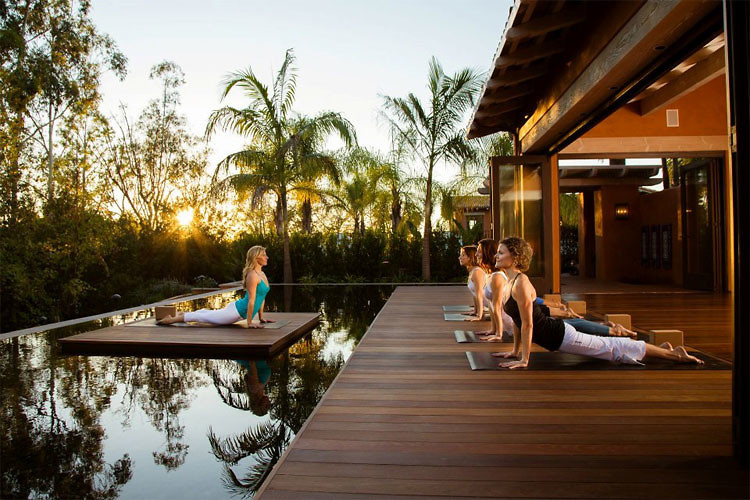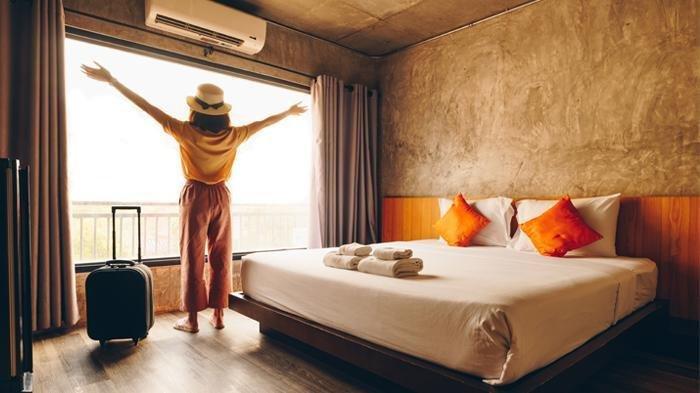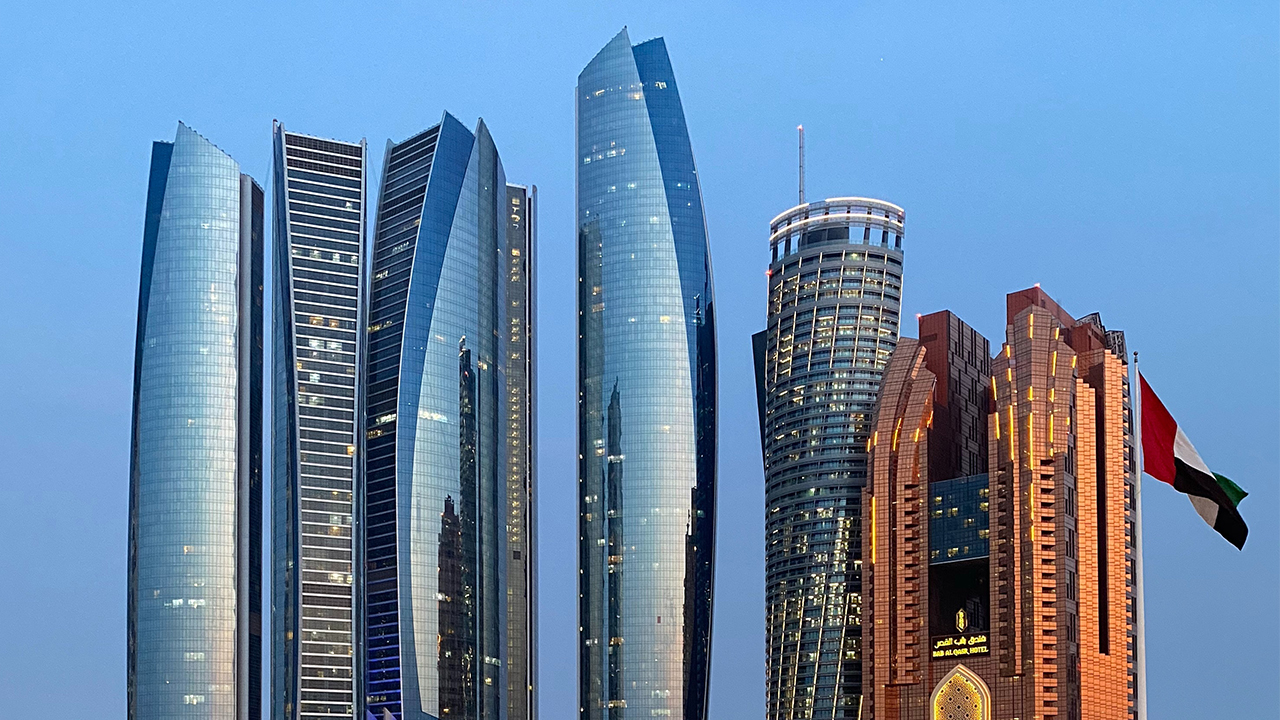The modern world, with its relentless pace and constant demands, has spurred a profound longing for balance and well-being. In response, wellness retreats have surged in popularity, evolving from niche getaways into a mainstream phenomenon. These dedicated havens offer more than just a vacation; they provide transformative experiences aimed at restoring mind, body, and spirit. This comprehensive article explores the burgeoning landscape of wellness tourism, detailing what defines a true wellness retreat, the multifaceted reasons behind their immense appeal, and the exciting trajectory of this revitalizing sector. It’s a journey into how intentional travel can become a powerful tool for self-care and holistic growth.
The Resurgence of Holistic Well-being
The concept of wellness extends far beyond the absence of illness; it encompasses a proactive pursuit of physical vitality, mental clarity, emotional balance, and spiritual fulfillment. In an increasingly interconnected yet often isolating world, individuals are seeking dedicated spaces and structured programs to address these needs. Wellness retreats offer precisely that: a temporary escape from daily stressors, coupled with expert guidance and immersive activities designed to foster profound personal change.
At its core, a wellness retreat is a specialized travel experience focused on improving or maintaining well-being through activities, treatments, and a supportive environment. This often involves:
A. Mind-Body Practices: Integrating disciplines like yoga, meditation, mindfulness, Qigong, Tai Chi, and breathwork to enhance mental focus, emotional regulation, and physical flexibility. Sessions are often guided by experienced instructors, catering to all skill levels. These practices are crucial for calming the nervous system, improving concentration, and fostering a deeper connection between one’s physical and mental states. Many retreats offer a variety of styles and difficulty levels to suit individual needs, from gentle restorative yoga to more dynamic Vinyasa flows.
B. Nutritional Guidance and Wholesome Cuisine: Providing carefully curated meal plans that often emphasize organic, locally sourced, plant-based, and nutrient-dense foods. Many retreats offer workshops on healthy eating, cooking classes, and personalized dietary consultations to empower guests to continue healthy habits post-retreat. The food is not just about sustenance; it’s an integral part of the healing process, designed to detoxify, nourish, and energize the body, often accommodating various dietary restrictions like gluten-free, vegan, or raw food preferences.
C. Spa and Healing Therapies: Offering a range of treatments designed to relax, detoxify, and rejuvenate the body. This includes traditional massages (Swedish, deep tissue, hot stone), hydrotherapy (water-based treatments like thermal baths and saunas), aromatherapy, Ayurvedic treatments (ancient Indian healing practices), traditional Chinese medicine therapies (acupuncture, cupping), and often unique local healing practices specific to the retreat’s region. These therapies complement the active elements of the retreat, promoting physical release and deep relaxation.
D. Fitness and Movement: Incorporating various forms of physical activity beyond structured classes, such as hiking through scenic trails, swimming in natural pools or oceans, personalized fitness training sessions, Pilates, dance, or even adventurous activities like kayaking or paddleboarding. The focus is often on sustainable movement that can be integrated into daily life, encouraging guests to find joy in physical activity rather than viewing it as a chore. Programs are typically adaptable to different fitness levels.
E. Emotional and Spiritual Growth: Facilitating workshops, guided journaling sessions, one-on-one coaching, and contemplative practices to address emotional well-being, stress management, spiritual connection, and personal development. This might include sound healing with gongs or singing bowls, art therapy for emotional expression, grief counseling, or workshops on cultivating gratitude and compassion. These elements aim to provide tools for inner peace and resilience, helping guests process emotions and develop coping mechanisms.
The Multifaceted Appeal of Wellness Retreats
The surging popularity of wellness retreats is driven by several key factors reflecting contemporary societal needs and desires:
A. Escaping Modern Life’s Demands
The relentless pace of modern life, characterized by constant connectivity, demanding work schedules, urban congestion, and an “always-on” culture, leaves many individuals feeling overwhelmed, burnt out, and profoundly disconnected from themselves. Wellness retreats offer a crucial respite – a dedicated space and time to unplug, de-stress, and re-center away from these daily pressures. It’s a purposeful pause, designed to break the cycle of chronic stress and mental fatigue.
B. Proactive Health Management
There’s a significant global shift from reactive healthcare (solely treating illness once it appears) to proactive health management (preventing illness, optimizing vitality, and enhancing longevity). Individuals are increasingly invested in preventative measures and seeking tools and practices to enhance their physical and mental resilience. Retreats provide structured, supportive environments to kickstart or deepen these preventative health practices under the guidance of experts, offering a holistic approach to well-being that conventional medicine often overlooks.
C. Mental Health Awareness and Support
Increased awareness and reduced stigma around mental health issues (such as anxiety, depression, chronic stress, and burnout) have led to a greater willingness for individuals to seek holistic support. Wellness retreats offer safe, nurturing, and non-clinical environments where participants can explore mindfulness, stress reduction techniques, emotional regulation, and find solace and peace. They provide tools for managing mental well-being, often through practices like meditation, breathwork, and therapeutic discussions, fostering resilience in a more gentle setting than traditional therapy.
D. Desire for Digital Detox
The ubiquitous nature of smartphones, social media, and constant digital notifications has led to widespread digital fatigue and addiction. Many travelers actively seek opportunities for a profound “digital detox” to reclaim their attention spans, improve sleep quality, reduce comparison culture, and foster deeper, genuine real-world connections. Retreats often enforce or strongly encourage device-free zones, silent periods, and limited internet access, creating a truly unplugged experience that allows for introspection and genuine presence.
E. Quest for Authentic Experiences and Personal Growth
Beyond mere relaxation or sightseeing, modern travelers seek experiences that offer deep personal growth, self-discovery, and meaningful cultural immersion. Wellness retreats provide transformative journeys that go beyond superficial tourism, fostering deeper self-awareness, teaching new life-enhancing skills (like meditation, advanced yoga, or mindful eating), and cultivating a profound sense of accomplishment and renewed purpose. Guests are looking for experiences that change them from within.
Pillars of a Transformative Wellness Retreat
Not all retreats are created equal. A truly transformative wellness retreat is built upon several core pillars that ensure a holistic, impactful, and sustainable experience for participants.
A. Expert Facilitation and Personalized Guidance
The caliber of instructors, therapists, and facilitators is paramount. They should be highly qualified (e.g., certified yoga teachers, licensed therapists, registered nutritionists), experienced, and deeply empathetic. Personalized guidance, often beginning with an initial health assessment or one-on-one consultation upon arrival, is crucial. This allows for tailoring programs to individual needs, whether it’s adjusting yoga poses for specific conditions, recommending precise dietary changes based on health goals, or providing one-on-one coaching for emotional challenges. The expertise ensures safety, effectiveness, and a deeper learning experience.
B. Holistic and Integrated Programming
A comprehensive retreat addresses multiple, interconnected dimensions of well-being – physical, mental, emotional, and often spiritual or energetic. This means a carefully balanced schedule incorporating various activities like dynamic yoga sessions, silent meditation practices, invigorating fitness classes, educational healthy eating workshops, rejuvenating spa treatments, and ample opportunities for quiet reflection. The different elements should be designed to be integrated and synergistic, supporting each other to create a profound and lasting transformational effect. It’s not just a collection of activities but a cohesive journey.
C. Nurturing Environment and Thoughtful Design
The physical setting plays a vital role in fostering healing and relaxation. Retreats are typically located in serene natural environments, far removed from urban noise and pollution. The architecture and interior design should promote calm, comfort, and a deep connection with nature, often using sustainable, natural materials, maximizing abundant natural light, and creating tranquil spaces for contemplation. Attention to every detail, from the bedding and communal areas to the subtle scents and sounds, contributes to a deeply nurturing and restorative atmosphere.
D. Wholesome, Nutrient-Dense Nutrition
“Food is medicine” is a core tenet. A key pillar is the provision of delicious, balanced, and nutrient-dense meals that specifically support the retreat’s wellness goals (e.g., detoxification, energy boosting, gut health). This almost always means organic, predominantly plant-forward, locally sourced ingredients. Beyond meals, nutritional guidance, hands-on cooking classes, and often personalized dietary plans help guests understand and adopt healthier eating habits that can be continued and sustained once they return home. Transparency about ingredients and preparation methods is also crucial.
E. Emphasis on Mindfulness and Digital Disconnection
Creating an environment that profoundly encourages presence, introspection, and reduces external distractions is crucial for deep healing. This includes designated digital-free zones, clear encouragement for limiting device use, and guided mindfulness practices (meditation, mindful eating, walking meditation, body scans). The aim is to shift focus inward, quiet the mind, and foster a deeper connection with the present moment, allowing for mental clarity and emotional processing. Some retreats may even have strict digital detox policies.
F. Community and Connection Opportunities
While personal growth and individual well-being are central, opportunities for connecting authentically with like-minded individuals can greatly enhance the retreat experience. Group activities, communal meals, sharing circles, and shared learning environments foster a strong sense of belonging, support, and camaraderie. This allows participants to share insights, challenges, and successes in a non-judgmental and empathetic space, often leading to lasting friendships and a supportive network.
Types of Wellness Retreats

The wellness retreat sector is incredibly diverse, catering to a wide spectrum of needs, goals, and preferences. This specialization allows individuals to find the perfect fit for their personal journey.
A. Yoga and Meditation Retreats
Focus: Deepening one’s yoga practice (from beginner to advanced levels), mastering various meditation techniques, and cultivating mindfulness in daily life.
Features: Daily multiple yoga classes (e.g., Vinyasa, Hatha, Ashtanga, Restorative, Yin), guided meditation sessions (sitting, walking), pranayama (breathwork exercises), workshops on yoga philosophy and mindfulness principles, and often periods of noble silence. Some may include specific spiritual teachings or mantra chanting.
Destinations: Perennial favorites include Bali, India, Thailand, Costa Rica, and other serene natural settings globally known for their spiritual or natural beauty.
B. Detox and Cleansing Retreats
Focus: Ridding the body of accumulated toxins, improving digestive health, boosting energy levels, and promoting cellular regeneration.
Features: Juicing programs, specific raw food diets, supervised water or juice fasting (always under professional medical or naturopathic guidance), colon hydrotherapy, specialized detoxifying spa treatments (e.g., body wraps, lymphatic drainage massage), and educational sessions on holistic nutrition and gut health.
Destinations: Often located in clean, natural environments with access to fresh, organic produce, sometimes with specific climate benefits (e.g., arid climates for dry fasting).
C. Fitness and Adventure Retreats
Focus: Improving physical fitness, pushing personal boundaries, building strength and endurance, and combining challenging exercise with exploration of natural landscapes.
Features: Guided hiking or trekking, cycling tours, surfing lessons, Pilates, high-intensity interval training (HIIT) sessions, trail running, kayaking, rock climbing, or bespoke personal training sessions, often led by expert trainers in highly scenic outdoor locations.
Destinations: Mountain ranges (e.g., Himalayas, Alps, Andes), coastal regions with waves (e.g., Central America, Portugal), national parks, and other active, adventurous landscapes.
D. Stress Management and Burnout Recovery Retreats
Focus: Reducing chronic stress, preventing or recovering from professional burnout, enhancing emotional resilience, and improving sleep quality.
Features: Mindfulness-Based Stress Reduction (MBSR) programs, therapeutic group workshops, gentle yoga and restorative practices, sound healing, aromatherapy, cognitive-behavioral therapy (CBT) techniques for stress, expressive arts therapy, and ample unstructured relaxation time.
Destinations: Quiet, secluded locations away from city noise and distractions, often with calming natural elements like forests or lakes.
E. Spiritual and Mindfulness Retreats
Focus: Deepening spiritual connection, cultivating inner peace, expanding self-awareness, and exploring higher consciousness.
Features: Intensive guided meditations (often multi-day), contemplative practices, silent retreats, chanting, sacred ceremonies, philosophical teachings, and extended periods for personal reflection. These retreats can be non-denominational or draw from specific spiritual traditions (e.g., Buddhist, Sufi).
Destinations: Ashrams, secluded temples, monasteries, or natural sanctuaries known for their tranquility and spiritual energy.
The Future of Wellness Retreats
The wellness retreat sector is dynamic and continuously evolving, driven by scientific advancements, changing consumer needs, and technological integration. Its future promises even more personalized, effective, and accessible experiences.
A. Hyper-Personalization Driven by Advanced Tech: Leveraging cutting-edge AI and data from wearable technology (fitness trackers, sleep monitors, smart rings) to create even more highly personalized retreat programs. Data from comprehensive pre-retreat questionnaires and real-time biometric feedback will inform bespoke schedules, precise dietary recommendations, personalized therapeutic interventions, and even adapt activities on the fly, moving far beyond generalized programs to a truly unique journey for each individual.
B. Integration of Biohacking and Longevity Science: Retreats will increasingly incorporate advanced biohacking techniques (e.g., cryotherapy for recovery, red light therapy for skin and cellular health, hyperbaric oxygen therapy for enhanced healing), personalized genetic insights for tailored nutrition and exercise, and the latest longevity research into their offerings. This appeals to a growing demographic seeking to optimize performance, prevent disease, and extend their healthspan through scientifically backed methods.
C. “Prescription” Retreats and Medical Integration: We will see a growing trend where mainstream healthcare providers, recognizing the undeniable benefits, may increasingly “prescribe” specific wellness retreats as a vital part of a holistic treatment plan for chronic conditions (e.g., diabetes, heart disease), mental health issues (e.g., anxiety, depression), stress-related illnesses, or post-recovery rehabilitation. This signifies a stronger integration of wellness travel into the broader healthcare ecosystem, potentially even with insurance coverage.
D. Virtual and Hybrid Retreats: While the irreplaceable value of in-person experiences remains, technology will enable more sophisticated virtual components (e.g., pre-retreat online courses to build foundational knowledge, post-retreat virtual check-ins with facilitators, online meditation groups for ongoing support) or truly hybrid models that seamlessly blend physical presence with continuous digital support, making wellness tools more accessible globally and supporting habit integration back home.
E. Sustainability and Regenerative Focus Deepened: Retreats will deepen their commitment to environmental sustainability, moving beyond merely minimizing harm to actively becoming “regenerative” – meaning they contribute positively to local ecosystems and communities. This includes implementing large-scale permaculture gardens, participating in active wildlife conservation (e.g., rewilding efforts), supporting indigenous knowledge and land stewardship, and potentially becoming carbon-negative, restoring what was lost.
Choosing Your Transformative Retreat
With the abundance of options available, selecting the right wellness retreat requires thoughtful consideration and self-reflection to ensure it aligns with your personal needs and goals:
A. Define Your Goals Clearly: What do you truly hope to achieve from this experience? Are you seeking deep stress reduction, a significant boost in physical fitness, profound spiritual growth, a full body detoxification, a complete digital detox, or healing from a specific emotional challenge? Clearly defining your primary objectives will guide your search and help narrow down the vast array of options.
B. Consider Your Budget Realistically: Retreats vary widely in price, from budget-friendly options to ultra-luxury experiences. Determine what you can comfortably afford without creating additional financial stress. When comparing costs, always clarify what is included (e.g., airport transfers, specific treatments, all meals, excursions, one-on-one sessions), as hidden extras can quickly inflate the total price.
C. Research the Program, Philosophy, and Facilitators Thoroughly: Look for detailed daily itineraries, understand the overall philosophy or approach of the retreat (e.g., Ayurvedic, meditative, fitness-focused, spiritual), and critically evaluate the qualifications, experience, and teaching style of the instructors, therapists, and facilitators. Ensure their expertise and approach resonate with your personal preferences and needs. Read bios carefully.
D. Read Reviews and Testimonials Extensively: Seek out independent reviews from past participants on trusted platforms (e.g., TripAdvisor, Google Reviews, specific wellness retreat directories). Pay close attention to comments regarding the effectiveness of the program, the quality of staff, the standard of food, the comfort of accommodation, and the overall atmosphere. Look for consistent themes in positive and negative feedback.
E. Assess the Location and Environment: Decide if you prefer a mountain sanctuary, a serene beach, a lush forest, or a tranquil desert setting. The natural environment significantly impacts the retreat experience and your ability to connect with nature. Consider accessibility – how easy and costly is it to get there? Do you want to be completely isolated or have some access to local towns?
Conclusion
The surge of wellness retreats is a clear testament to humanity’s innate need for balance, restoration, and profound self-care in an increasingly demanding world. These dedicated sanctuaries offer more than just a typical vacation; they provide a structured, supportive pathway to holistic well-being, significant personal growth, and a deeper connection to oneself and the natural world. By offering a diverse range of meticulously crafted programs, expert guidance from compassionate professionals, and nurturing environments, wellness retreats empower individuals to embark on transformative journeys that extend far beyond their stay. Investing in a wellness retreat is truly investing in your most valuable asset: your health, happiness, and long-term resilience. As the global landscape continues to evolve, these havens of rejuvenation will only grow in their significance, becoming essential pillars of a balanced, purposeful, and fulfilling life.














